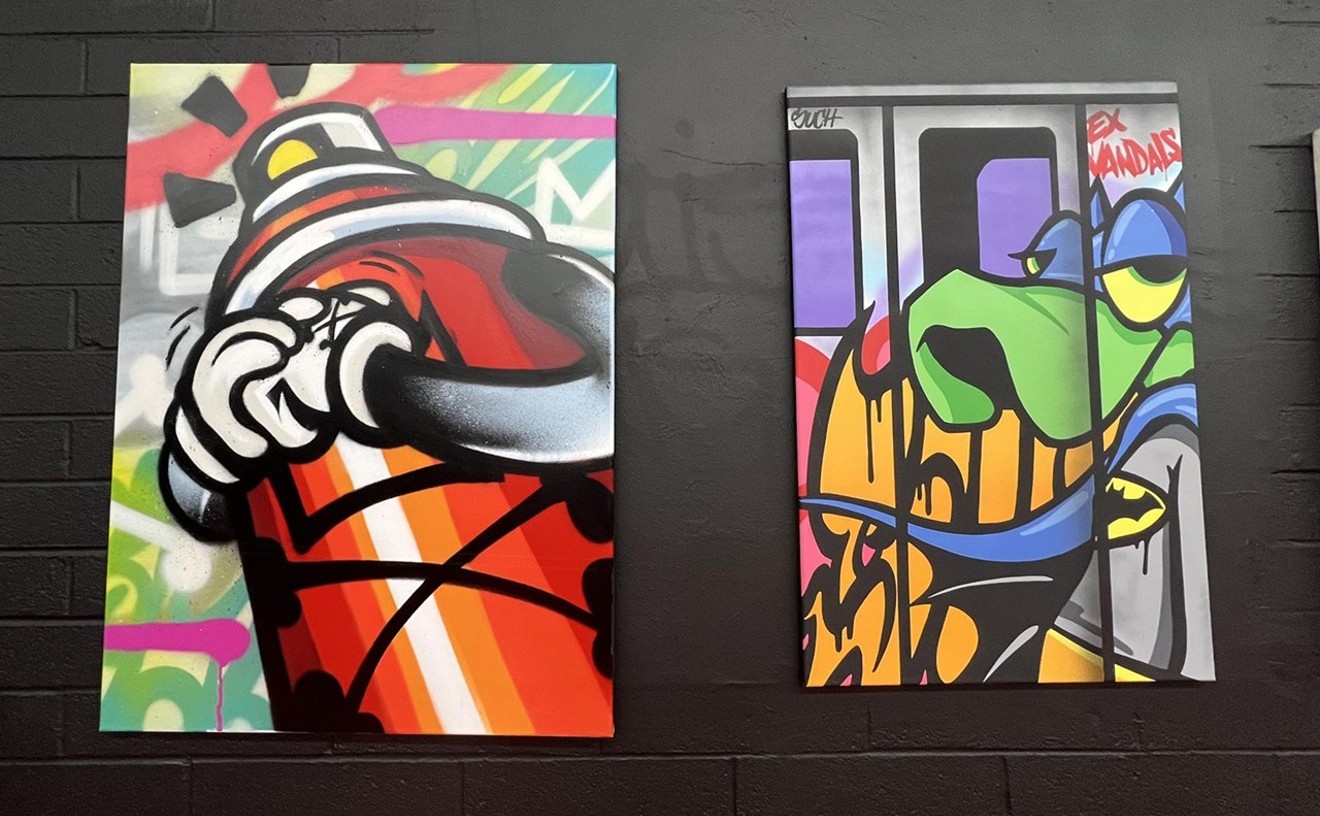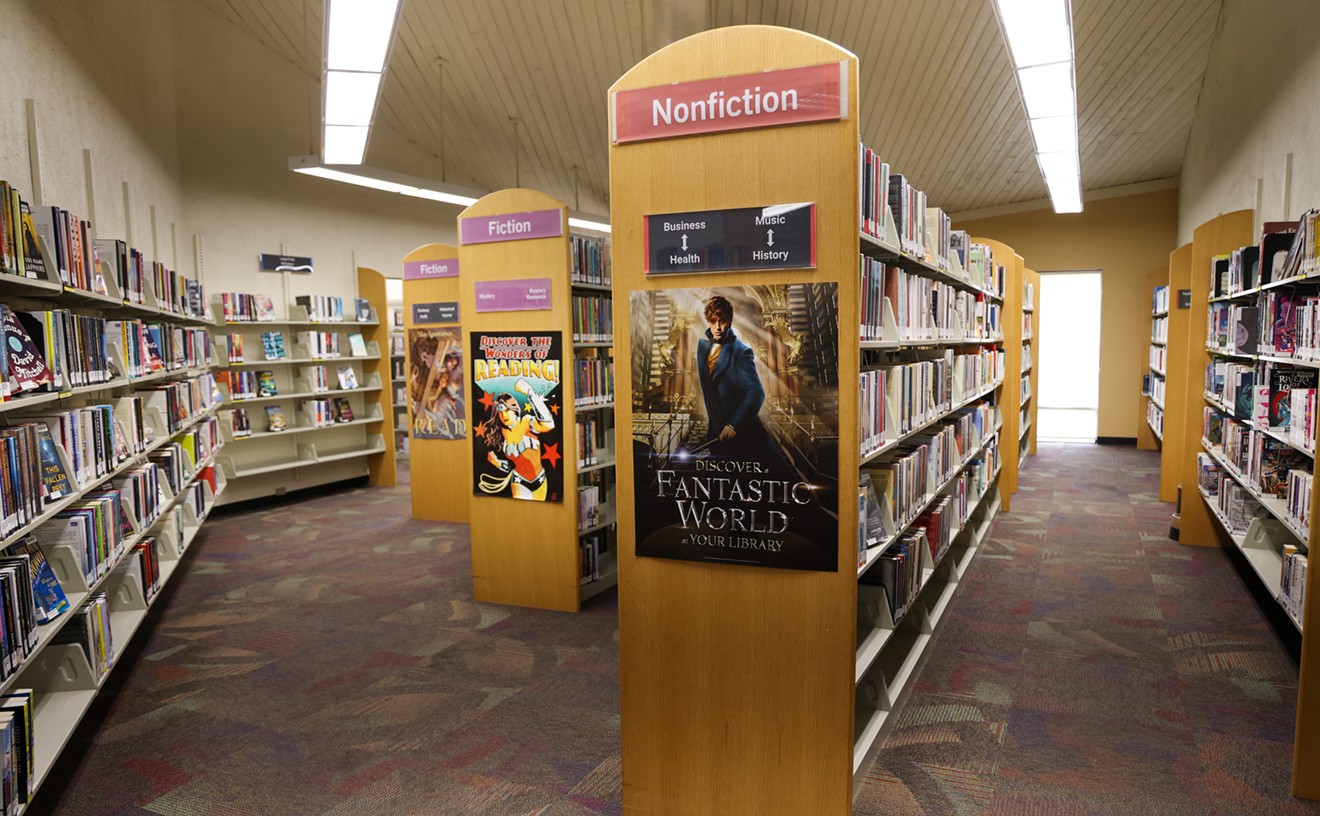Last month was Arizona Archives Month (put on by the Arizona State Library, Archives and Public Records – a division of Arizona Secretary of State Michele Reagan), but you might've missed it, what with all the beer festivals and costume shopping.
A conservator with the Archives and Records Management Branch, Siegfried Rempel played a big role in Arizona Archives Month, where the public was encouraged to head over to the State Archives to “save your treasures by learning preservation techniques.”
Rempel was available by appointment to give advice and preservation techniques on paper-based treasures, such as photographs, journals, and books. Rempel saw etchings, a grandmother’s cookbooks, and Korean War flight logs.
Rempel is big on preserving records and tangible memories. We met with him at the Conservation Lab in the Polly Rosenbaum Building, where we checked the many tools of the trade, including a future-is-now-looking Cold Suction Table with a humidification dome, two old-timey-seeming book presses, and one very chilly vault.
However, just because November tops the calendar doesn’t mean you can’t learn a thing or too about preserving your personal records and “family treasures.” Here are some preservation tips for those can’t wait till next October:
Preventative Measures
Rempel advises attics and basements to be bad storage spots for anything truly valuable. He says attics are hot, and basements can get leaky as “water seeks the lowest level.” Apparently, Phoenicians don’t have much to worry about, as most of us use air conditioning constantly – “an ideal environment“ – don’t have basements, and know better than to put valuables in the attic, thanks to summer’s reputation.
Putting something into storage? Think about laying some some pallets to raise the material. move paper-based material toward the back, and consider housing your stuff in plastic bins. Rempel says plastic containers prevent the water crawling toward your possessions unlike cardboard boxes, and stacking them only creates a better seal with the lids.
Books, baseball cards, and of course personal records also have a solution. “We put things into envelopes and boxes,” Rempel says, “This minimizes exposure and creates an encapsulated environment.” Rempel also makes custom book boxes in the lab, measured for each specific book.
Of course there’s no need for too much panic thanks to Cloud-based storage. While seemingly accessible at all time, things can still get lost. Though not catastrophic, one can lose access or ownership of their account if they’re subject to litigation, or some similar incident.
You also might want to think about creating copies of certain records, and keeping them at a relative or friend’s house.
If you’re creating your own records or photos and worried about future deterioration, Rempel suggests using bond paper (found at standard office supply store), and using a laser printer.
When putting things on display, remember UV and interior light can cause the paper and dyes to change. Even standard light bulbs can be damaging, “But LEDs compact fluorescent low in infrared UV.” Rempel also suggests the “concept of putting things to rest,” or determining how much time something can be on display.
Responsive Measures
Mold is the enemy at the Archives and Records Management Branch. “If something gets wet here,” Rempel says, “If we don’t deal with it and it gets moldy, we lose the record.”
If a book gets wet, Rempel says to bring it out in the air conditioning, and put paper toweling between pages of book. Don’t stick it in a plastic bag, that’ll mean mold.
“Photos are more at risk,” Rempel says. Photographs have a layer of gel, which can be eaten away by moisture, making the paper soluble. This time, do stick in is a zipper storage bag, and put it in the freezer. “By freezing we stop all chemical and biological activity,” he says, “Which buys us time.”
The Arizona State Library, Archives and Public Records do offer recovery services. “We understand how paper responds to manipulation,” Rempel says. “It’s called material sciences.” But the Archives and Records Management Branch stresses they are not competing with the private sector. However, according to Communications Manager Kim Crawford, “Advice is always available free of charge.”











